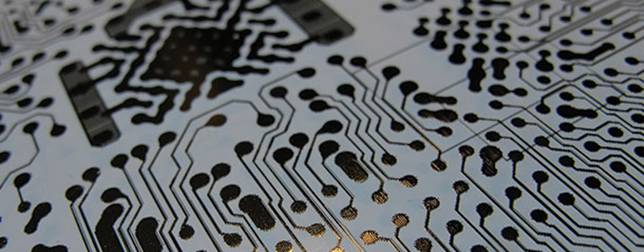In conductive ink business, a leading frontier is conformal coating on 3D-shaped objects. A report titled “Conductive Ink Markets 2018-2028: Forecasts, Technologies, Players” explains growing trends of 2 categories of conductive inks: Aerosol-deposited 3D-shaped antennas, and 2. Conformal on-chip EMI shielding.
Aerosol deposition
Aerosol deposition is controlled digitally and has fewer process steps and a lower machine footprint compared to the main competition LSD (laser direct structure).
The aerosol-compatible conductive inks are made up of mainly of nano-sized or sub-micron particles. The particle size distribution of this type need to be tightly-controlled so that the jetted lines remain uniform. An ongoing development is enhancing the adhesion and achieving higher conductivity levels at lower temperatures and shorter curing times.
Read more Adhesives for Wearable Applications – Interview with Adhesives Research
Today, numerous industrial scale aerosol machines have been installed globally, opening the entry points to ink sales.
Sprayed on-chip conformal EMI shielding
EMI (electromagnetic interference) is amongst the hottest trends in the conductive ink business. It is a growing topic in electronic devices which sees multiple ICs packaged in a small space. Although, bulky and inexpensive metallic cages could be used in EMI shielding, it would make the devices thicker rendering them unacceptable to consumers. A thin conductive ink applied conformally on the chip makes it thinner, but a little expensive.
This type has already been used in iPhone 7 where several ICs have such coatings. These coatings are based on sputtered silver. Sputtering is a method that delivers highly conductive EMI shielding performance.
Read more Micro Batteries and Micro Molding Solutions for Your Business
Ink spraying, on the other hand, is viable and very attractive compared to sputtering. This is because unlike sputtering, a non-vacuum process of spraying can be easily scaled to large areas. Moreover, this low-cap deposition mechanism delivers highly conformal coverage with superb side-wall coverage. Also the inks can be properly formulated to enhance adhesion.
The coated lines may not be as conductive as well-sputtered thin film coating, which is solid in appearance. Nano inks would offer high conductivity and higher thinness but would cost more. Micron-sized spherical-type particles are not as conductive, although cheap. Hybrid versions might hit the sweet spot but that must be proven in evaluations.
Despite some drawbacks, the demand is very strong especially in China and the market is now eagerly awaiting a proper reference. Indeed, success in spraying ink market could change the fortunes of many conductive ink technologies.













